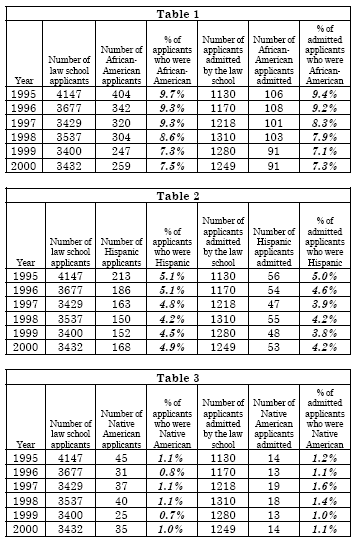
Chief Justice Rehnquist's dissent in Grutter
Only when the “critical mass” label is discarded does a likely explanation for these numbers emerge. The Court states that the Law School’s goal of attaining a “critical mass” of underrepresented minority students is not an interest in merely “‘assur[ing] within its student body some specified percentage of a particular group merely because of its race or ethnic origin.'” Ante, at 17 (quoting Bakke, 438 U. S., at 307 (opinion of Powell, J.)). The Court recognizes that such an interest “would amount to out-right racial balancing, which is patently unconstitutional.” Ante, at 17. The Court concludes, however, that the Law School’s use of race in admissions, consistent with Justice Powell’s opinion in Bakke, only pays “‘[s]ome attention to numbers.'” Ante, at 23 (quoting Bakke, supra, at 323).
But the correlation between the percentage of the Law School’s pool of applicants who are members of the three minority groups and the percentage of the admitted applicants who are members of these same groups is far too precise to be dismissed as merely the result of the school paying “some attention to [the] numbers.” As the tables below show, from 1995 through 2000 the percentage of admitted applicants who were members of these minority groups closely tracked the percentage of individuals in the school’s applicant pool who were from the same groups.
 |
For example, in 1995, when 9.7% of the applicant pool was African-American, 9.4% of the admitted class was African-American. By 2000, only 7.5% of the applicant pool was African-American, and 7.3% of the admitted class was African-American. This correlation is striking. Re-spondents themselves emphasize that the number of underrepresented minority students admitted to the Law School would be significantly smaller if the race of each applicant were not considered. See App. to Pet. for Cert. 223a; Brief for Respondents Bollinger et al. 6 (quoting App. to Pet. for Cert. of Bollinger et al. 299a). But, as the examples above illustrate, the measure of the decrease would differ dramatically among the groups. The tight correlation between the percentage of applicants and admittees of a given race, therefore, must result from careful race based planning by the Law School. It suggests a formula for admission based on the aspirational assumption that all applicants are equally qualified academically, and therefore that the proportion of each group admitted should be the same as the proportion of that group in the applicant pool. See Brief for Respondents Bollinger et al. 43, n. 70 (discussing admissions officers’ use of “periodic reports” to track “the racial composition of the developing class”).
Not only do respondents fail to explain this phenomenon, they attempt to obscure it. See id., at 32, n. 50 (“The Law School’s minority enrollment percentages . . . diverged from the percentages in the applicant pool by as much as 17.7% from 1995-2000”). But the divergence between the percentages of underrepresented minorities in the applicant pool and in the enrolled classes is not the only relevant comparison. In fact, it may not be the most relevant comparison. The Law School cannot precisely control which of its admitted applicants decide to attend the university. But it can and, as the numbers demonstrate, clearly does employ racial preferences in extending offers of admission. Indeed, the ostensibly flexible nature of the Law School’s admissions program that the Court finds appealing, see ante, at 24-26, appears to be, in practice, a carefully managed program designed to ensure proportionate representation of applicants from selected minority groups.
